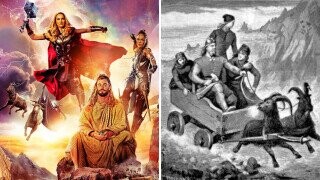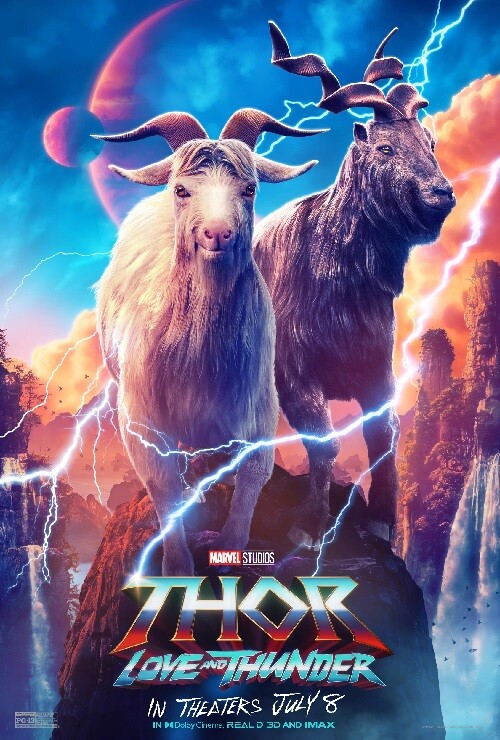'Thor: Love And Thunder's Goats Have A Messed Up Backstory

Marvel Studios, Wikimedia Commons
The trailers for Thor: Love And Thunder signaled the introduction of two beloved Marvel Comics characters into the MCU: Thor's goats, Toothgnasher and Toothgrinder, who pull his chariot through space when he's got passengers or is just too lazy to fly by himself. Marvel clearly considers Thor's space goats a big selling point for the movie, considering they even got their own poster.

Marvel Studios
Toothgnasher and Toothgrinder first appeared in the comics in 1976, but their backstory is a lot older ... and darker. They're based on Tanngrisnir and Tanngnjóstr, Thor's favorite method of transportation and favorite recurrent meal in ancient Norse mythology. Wait, does that mean Thor would constantly take a bite or two out of his goats between trips? Nah, he would eat them whole, then use his magic hammer to bring them back to life and eat them again the next time he was hungry. For all we know, Thor's power to resuscitate things he has eaten isn't limited to goats -- how many times has he secretly killed and brought back Loki because he was hungry and there were no large animals in the general vicinity?
Don't Miss
But this isn't even the messed up part here. In one old Norse tale, Thor crashes at a peasant family's home for one night and invites his hosts to enjoy some delicious reconstituted goat meat with him. Thor must have hogged most of the meal, though, because even after the family is done eating, the son is still hungry enough to break one of the bones and suck out the marrow. The next morning, Thor resurrects the goats with his hammer and is distraught to find out that "one of them was lame in a hind leg."

Thor is so furious with the peasants for mishandling his goat's bones that he "clenched his hands on the hammer-shaft so that the knuckles whitened," as if he was preparing to smash them all into human jelly. The peasants "cried out lustily" and offered Thor everything they had. Upon seeing how scared the family was, Thor calmed down and graciously let them live ... in exchange for their children. Not just Thjalfi the marrow-sucker, but also his innocent sister Roskva, who for all we know was a vegetarian and didn't even touch the goats. And that's how Thor ended up owning child slaves.

Thjalfi and Roskva then accompany Thor during an adventure where the boy is forced to race against the speed of thought itself -- which is why he shows up in the Marvel comics as a super-fast superhero. Anyway, now you know why those goats are always screaming in Thor: Love and Thunder: it's the existential terror of knowing they exist both in front of Thor's chariots yet also inside his stomach and wherever he's pooped them in the past, all at the same time.
Follow Maxwell Yezpitelok's heroic effort to read and comment on every '90s Superman comic at Superman86to99.tumblr.com.
Thumbnail: Marvel Studios, Wikimedia Commons